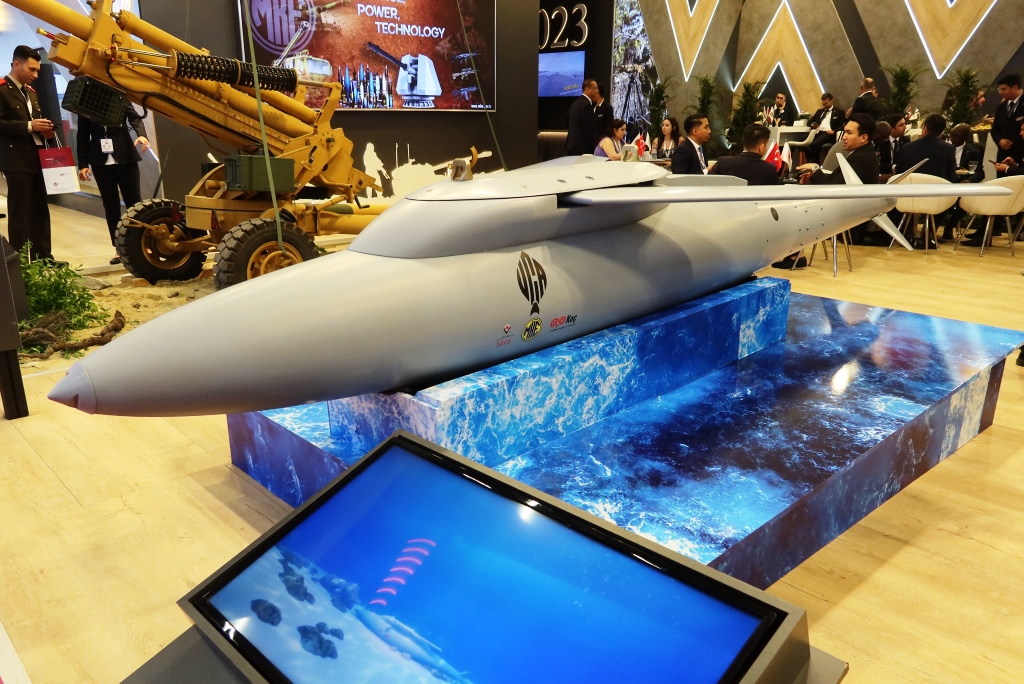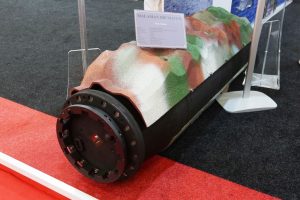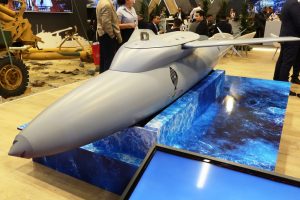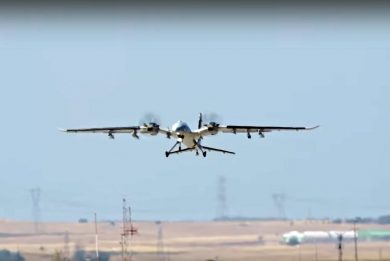
IDEF 2023 – Malaman and Uça; the sea bottom Turkish challenge to enemy naval platforms
At IDEF 2023 visitors could see for the first time the Malaman deep bottom mine as well as the Uça, an Mk84 air-launched bomb transformed to deploy the sea mine at distance
In 2011 the Turkish Navy launched a programme aimed at developing a new generation of sea bottom mines to be deployed by surface ships, submarines and aircraft. Known as project Malaman, the results of this programme surfaced at IDEF 2023.

The Malaman is over 1.8 metres long, has a diameter of 533 mm, compatible with heavy torpedo launching tubes, weighs 600 kg and can operate at temperatures between –2.5°C and +36°C, and at depths over 100 metres. It contains an undisclosed amount of in sensitive plastic-bound explosive. The mine is fitted with acoustic, magnetic and pressure sensors which data, combined together, allow precise identification of naval vessels. The identification friend or foe algorithm avoids the mine to be set off when friendly assets navigate in the area. No details were provided on the level of intelligence contained in the detection system, but it is quite probable that a database allows to precisely identifying the traffic, eventually activating the Malaman on pre-selected targets.
Heavily based on the Malaman development, at the MKE stand one of the news of the exhibition for the company was the Uça; this is made of an Mk-84 air launched bomb body fitted with the Gökce winged guidance kit developed by Tubitak SAGE, the Koç Holding being also involved in the project. The kit ensures long-range deployment, 70 km according to MKE that did not however detailed from which altitude this range can be obtained. The Uça can be launched from F-16 Fighting Falcon and F-4 Phantom II combat aircraft, as well as from UAVs such as the Akinci and the Aksungur, all aircraft in service in the Turkish Air Force.

As the Mk-84 has a diameter of 460 mm, it is clear that the warhead should be a derivative of the Malaman, which diameter is bigger. The Uça certainly exploits the same sensors and algorithms. During the flight the bomb/mine flies towards the intended coordinates using its GPS/inertial navigation system; its body is coated in radar absorbing materiel to avoid the Uça being detected by enemy radars. This avoids opponents to even know that mines have been laid in their area of operations; even if the aircraft from which the mine is deployed may be pictured by the radar, the stealthness of the Uça should not allow the enemy to be aware of its deployment, and if it might suspect that something has been launched the bomb/mine range makes it impossible to understand where this has hit the water.
The wings of the Gökce kit retract just before hitting the sea surface, reducing the possible drift due to currents when the system falls on the sea bottom. According to MKE sources the maximum operational depth should be around 200 metres. The same sources told EDR On-Line that the Uça could receive data from a command and control centre even when deployed on the sea bottom, no more details being provided. No precise information was provided on the development status, however open sources state that tests should start in 2024.
Photos by P. Valpolini



